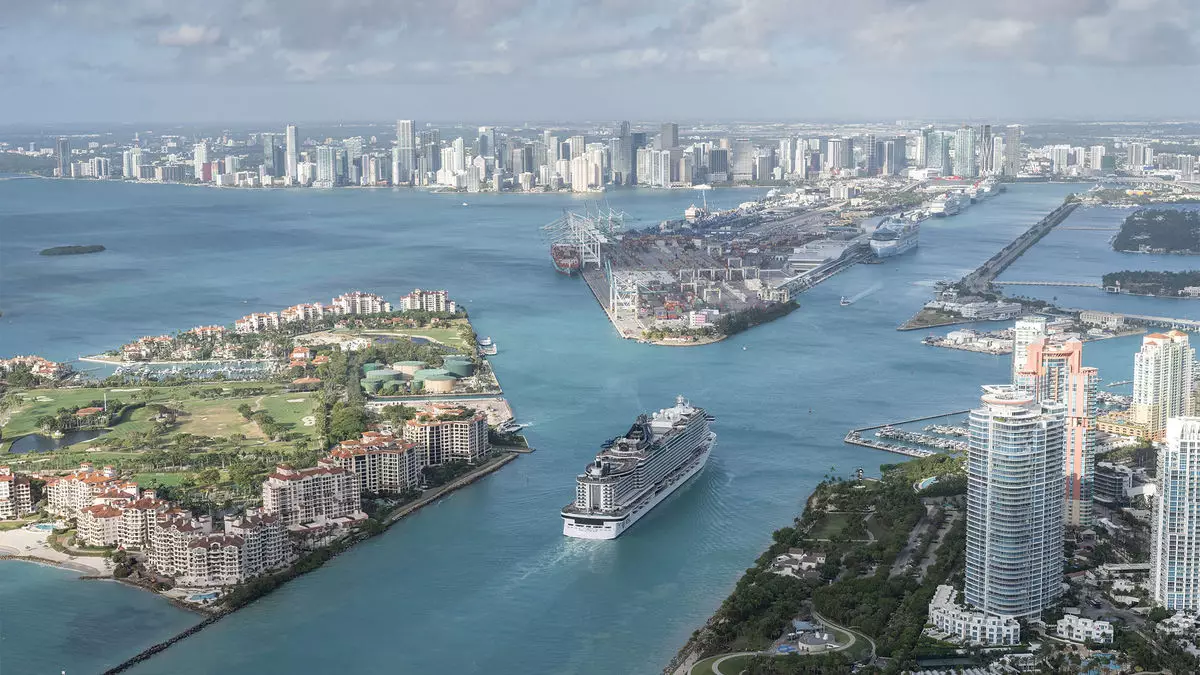Port Canaveral, located just an hour east of Orlando, has evolved into a prominent player in the world’s cruise industry. Once primarily a homeport for older vessels catering to short trips to tropical destinations, it is now the second-busiest cruise port globally, surpassed only by PortMiami. With its strategic location and consistent growth, Port Canaveral is rapidly becoming a preferred embarkation point for vacationers, attracting some of the largest and most modern ships currently sailing.
The fiscal year concluding on September 30 saw Port Canaveral achieving an impressive 7.6 million passenger movements—this reflects a remarkable 12% increase from the previous year. The forward momentum is expected to continue, with projections estimating the passenger count could soar to 8.4 million in the current year. This uptrend illustrates the port’s strategic advantage due to its proximity to a large driving market in the southeastern United States. The port’s executive director, John Murray, underscored the demand by suggesting that had potential new terminal projects been realized, they could have easily accommodated this influx.
However, the ambition to expand is not without its challenges. Plans for new infrastructure to accommodate this increasing passenger volume have faced setbacks. A stalled project has compelled Murray to pivot his focus toward enhancing existing facilities to streamline passenger and luggage flow at the terminals, some of which were designed three decades ago when cruise ship capacities were much lower than they are today.
The cruise industry is dramatically shifting towards larger vessels that can carry thousands of passengers. For instance, the Norwegian Aqua, set to launch from Port Canaveral in April, is expected to accommodate around 3,600 passengers. Similarly, the mammoth Royal Caribbean’s Star of the Seas, slated for an August debut, can carry an astounding 5,610 passengers, with potential to increase this number to 7,500 depending on boarding arrangements.
To effectively handle these substantial volumes of guests, Port Canaveral is undertaking significant renovations. New or upgraded terminals are essential considerations in the port’s long-term strategies. Among these improvements is the redevelopment of Cruise Terminal 5, designed to handle high traffic. Additionally, a feasibility study is underway for Cruise Terminal 10, which will allow for greater operational flexibility by serving various cruise lines, a model that diverges from the traditional commitment to single brands evident in many other ports.
The prospect of further growth at Port Canaveral is bright but complicated. Murray remains optimistic about unlocking a seventh berth for cruise operations, eyeing opportunities on the southern side of the port. These plans could extend over several years, owing to various logistical hurdles, including existing tenant agreements and relocating a vital Air Force communication line underneath the port.
While Murray asserts that Florida’s major ports are operating at full capacity, NCLH’s CEO Harry Sommer has a different viewpoint. He criticized the state’s decision to block new terminal developments, arguing that a new facility could draw a million additional cruisers and significantly benefit the industry.
Despite his frustrations, Sommer’s insights shed light on the broader landscape, indicating that while Florida’s major ports may be saturated during peak times, there remains room for innovation in scheduling and itineraries. NCLH is addressing space constraints by adjusting cruise lengths and departure days, suggesting a shift away from traditional week-long winter voyages exclusively.
As the cruise industry recovers from global disruptions, ports must continually adapt to new dynamics and opportunities. Port Canaveral has positioned itself well to not only capture a larger share of passenger traffic but to also welcome ever-larger cruise ships. The efforts to modernize existing terminals while exploring new projects reflect a proactive approach to meeting market demands.
Port Canaveral stands as a testament to the importance of adaptability in the bustling cruise travel sector. Through ongoing enhancements and the potential for new developments, it aims to solidify its status as a leading cruise port in the United States, enticing travelers seeking memorable vacation experiences on the high seas. With careful planning and execution, Port Canaveral is not only experiencing growth but is also crafting a legacy in the competitive cruise industry landscape.


Leave a Reply